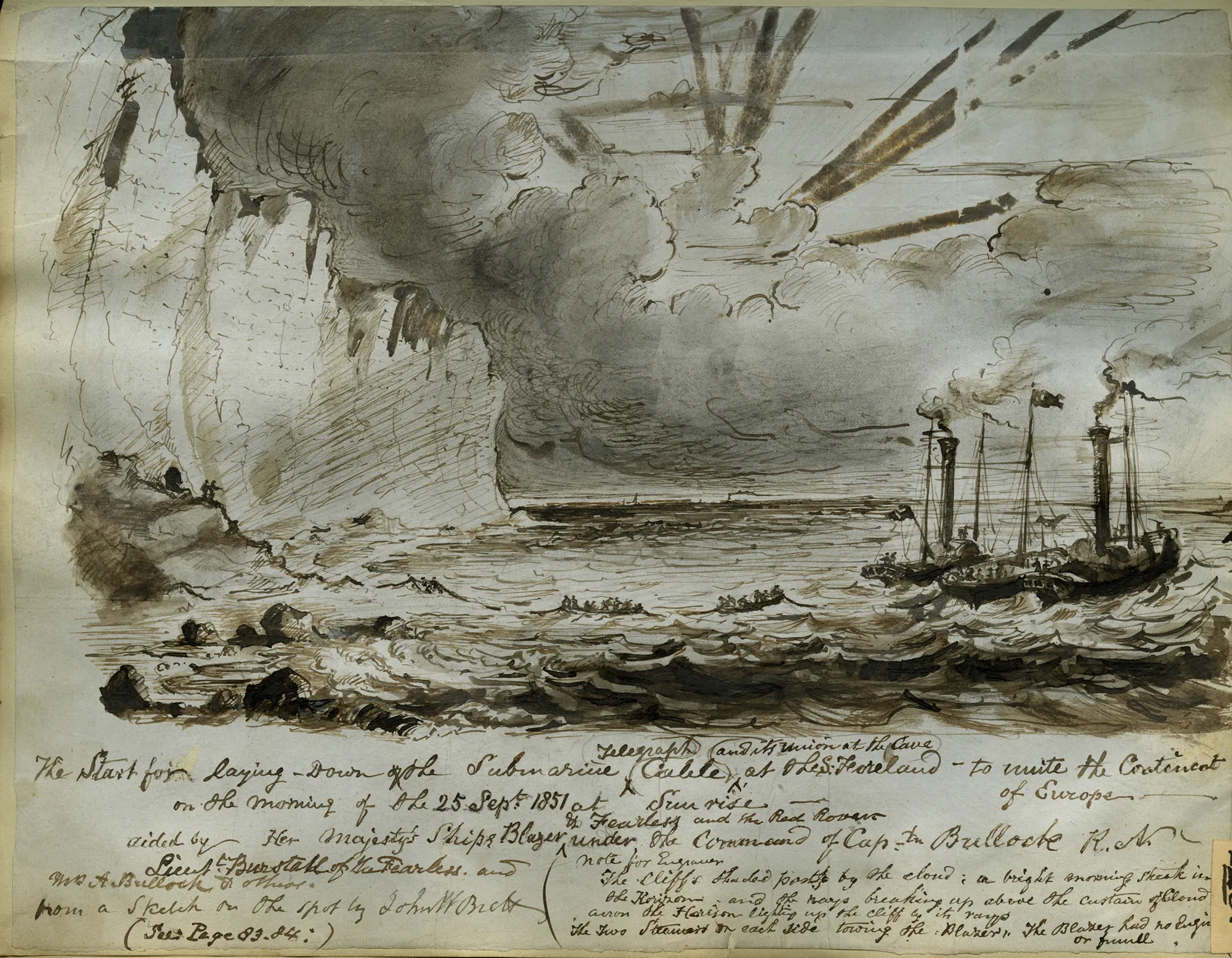The electric telegraph was introduced in Britain by Sir Charles Wheatstone and Sir William Fothergill Cooke. In 1837 they gave its first public demonstration with a successful transmission along a telegraph running from Euston to Camden stations.
By 1840 a telegraph line connected London to Dover and another connected Calais to Paris, yet there was no direct connection between the two cities. This spurred a number of people, starting with Wheatstone and Cooke, to propose a submarine cable across the channel.
Initially, the telegraph had been limited to overland use because rubber broke down when submerged for a length of time. This problem was overcome with Michael Faraday's recognition of the insulatory properties of gutta percha. In 1845, S W Silver & Co. made a machine capable of covering wire and submarine telegraphy became a reality.
Two brothers, Jacob and John Watkins Brett took over Cooke and Wheatstone's project. The success of their 1850 attempt was short-lived. However, its one-day existence included a message to Prince Louis Napoleon Bonaparte who had shown much interest in the whole enterprise.
In 1851, an improved cable by Thomas Crampton was laid by the Brett brother'sThe Electric Telegraph Company. It opened to the public on November 13 1851.
The telegraph cable that connected England with France was as much a physical feat of engineering as it was a symbolic connection of peace. Britain had been at war with France since the end of the 18th century, culminating in the battle against Napoleon at Waterloo only 36 years previously. The laying of the telegraph cable was an event uniting two historically warring nations by mutual cooperation and advances in communications technology.
The image shown is taken from a volume, personally compiled by Jacob Brett, regarding the England-France Submarine Telegraph (Ref. SC MSS 008/1).

John Brett made the sketch himself on the second voyage to unite the Continent of Europe, 25 September 1851. It states that the voyage was aided by Her Majesty's Ships Blazer, Fearless and the Red Rover under the command of Captain Bullock.
The Archives collection of Jacob Brett papers consists of three journals of documents and correspondence, patents, maps, reports, specifications drawings and prospectuses of companies he set up in relation to the venture (Ref. SC MSS 008).
2004 was the 100th anniversary of the signing of the Entente Cordial and the official amicability between two traditionally divided nations.
